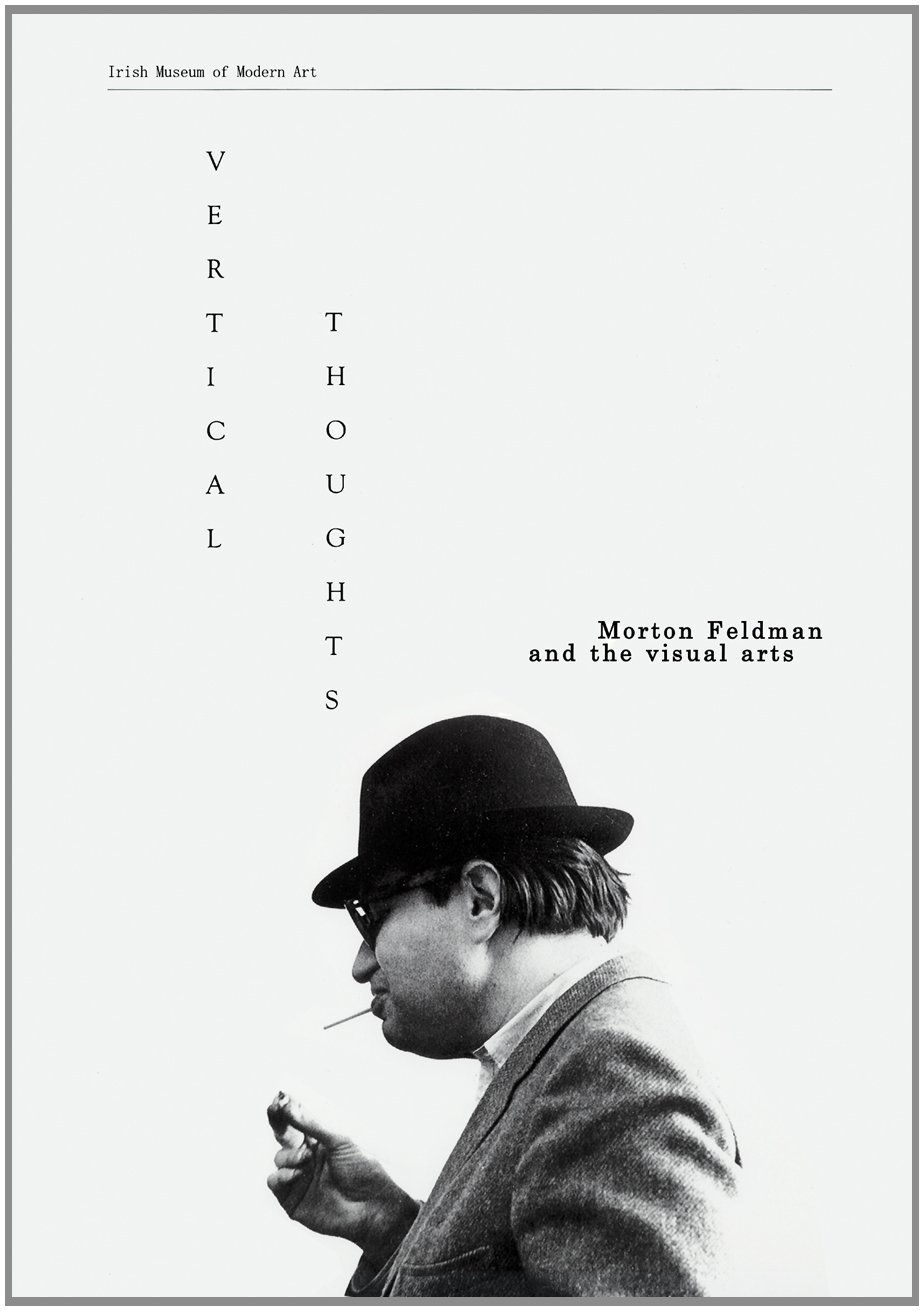Vertical Thoughts: Morton Feldman and the Visual Arts (2010)
Filed under catalogue | Tags: · music, painting

“If any music can be said to be painterly, it is that of Morton Feldman (1926-1987), one of the most influential composers of the twentieth century. Feldman (1926-1987) was deeply immersed in the milieu of New York Abstract Expressionism, and found analogies in sound to the materiality of Pollock, the gravitas of Rothko and the hesitant, venturing brushstrokes of Guston. Taking as its departure point an exhibition Feldman curated in 1967 titled Six Painters, Vertical Thoughts considers the impact that postwar American art had on Feldman’s own compositions. It features works by the titular six painters–Guston, Kline, Mondrian, de Kooning, Pollock and Rothko–and by other artists whom Feldman admired, such as Kitaj, Rauschenberg and Twombly. Also reproduced are works from Feldman’s own collection, including his Middle Eastern and Asian rugs, archival photographs and ephemera, musical scores and record covers of compositions dedicated to artists such as Guston and Rothko, and interviews with and writings by Feldman himself.”
Text by Brian O’Doherty, Francesco Pellizzi, Dore Ashton, Juan Manuel Bonet.
Edited by Seán Kissane
Publisher Irish Museum of Modern Art, Dublin, 2010
ISBN 9781907020087, 190702008X
319 pages
The Potosí Principle: How Can We Sing the Song of the Lord in an Alien Land? Colonial Image Production in the Global Economy (2010) [English/Spanish]
Filed under book, catalogue | Tags: · art history, colonialism, history, image, mining, painting

“Potosí is a Bolivian mining town, whose splendor even eclipsed that of London or Paris in the sixteenth century. The silver extracted there by forced laborers was instrumental in fuelling the development of early European capitalism. The dynamics of this economic colonialism spawned the production of images on a mass scale, not only in Spain, but also in the vice-royalty itself. The works of the “Andean Baroque” unveiled in The Potosí Principle attest to the fact that cultural hegemony is not a symbolic concept, but is, in fact, rooted in violence.
Contemporary artists have responded to these Baroque paintings by fashioning works of their own. The objective of this dialogue is to demonstrate the correlation between the function served by colonial painting and the function now assumed by the modern system of art in conferring legitimacy upon globalization’s new elites.”
With texts by Sonia Abián, Anna Artaker, Bartolomé Arzáns Orsúa y Vela, John Barker, Matthijs de Brujine, Thomas Campbell, Roberto Choque Canqui, Chto delat, Alice Creischer, Anthony Davies, Elvira Espejo, Marcelo Expósito, Harun Farocki, León Ferrari, Tom Flynn, Maria Galindo, Isaías Griñolo, Max Jorge Hinderer, Karl Marx School of the English Language, Peter Linebaugh, Gabriela Massuh, Eduardo Molinari, Fátima Olivarez, Plata de Refléxion sobre Politicas Culturales, Felipe Guaman Poma de Ayala, David Riff, Jorge Sanjinés, Andreas Siekmann, Luis Víctor Alemán Vargas, and Dmitry Vorobyev.
Edited by Alice Creischer, Max Jorge Hinderer, and Andreas Siekmann
Publisher Verlag der Buchhandlung Walther König, Cologne, 2010
ISBN 9783865609267, 3865609260
303 pages
via dbrvk
Exhibition (Reina Sofia)
Exhibition (HKW)
WorldCat
PDF (33 MB, updated on 2023-7-6)
Comments (2)Bruce Conner: It’s All True (2016)
Filed under book | Tags: · art, catalogue, collage, conceptual art, experimental film, painting, photography, punk

“Realist. Surrealist. Hippie. Punk. Bruce Conner (1933-2008) was all of these and more. A pioneer in experimental film, collage, photography, conceptual works, and paintings, he challenged the limitations of medium, genre, and style, constantly breaking new ground. Both of and ahead of his time, Conner continues to exert influence over artists working today. Bruce Conner: It’s All True was the first comprehensive retrospective of this pivotal American artist’s output, bringing together over 250 objects in various media, including film and video, works on paper, assemblages, photographs and photograms, performance, and more. Spanning his five-decade career, the exhibition presents aspects of Conner’s work that have rarely been seen before, from paintings he made in the 1950s to photos from the Bay Area punk scene in the 1970s to video work from the 2000s, as well as numerous works produced in the last decade of his life.”
With texts by Rachel Federman, Laura Hoptman, Kellie Jones, Michelle Barger, Roger Griffith and Megan Randall, Rachel Federman, Kristine Stiles, Rudolf Frieling, Gary Garrels, Diedrich Diederichsen, Stuart Comer, Johanna Gosse, a.o.
Edited by Rudolf Frieling and Gary Garrels
Publisher San Francisco Museum of Modern Art, in association with University of California Press, 2016
ISBN 9780520290563, 0520290569
384 pages
Review: Hugo Daniel (Critique d’art, 2017, FR).
Exh. reviews: Roberta Smith (New York Times), Andrea K. Scott (New Yorker), J. Hoberman (New York Review of Books), Matthew Biro (Brooklyn Rail), Maika Pollack (Aperture), Kristin M. Jones (Wall Street Journal), Kimberly Connerton (Aesthetica), Thomas Gladysz (Huff Post).
Exhibition (MoMA)
Exhibition (SFMOMA)
Exhibition (Reina Sofia)
Publisher
WorldCat
PDF (35 MB)
Comment (0)
